Spiral : The Complete Series
I liked everything about 'Spiral'. From the punk pop blast of the opening credits song*, to the stylish animation and cool characters, to the weird mix of X-Files like mystery and intrigue, to the CSI like logic in solving the role-playing style games. For me this was a near perfect anime. (*"Kibouhou" ("Cape of Hope") by Strawberry Jam).
Whilst I would refer all serious anime fans to Jitendar's detailed reviews of the individual discs that make up this set, I should say that, despite the incrongruities (didn't the Blade Children start the series by murdering teachers and students?), I loved the completely enigmatic approach to the series. I understand Jitendar's frustration at never finding out who the Blade Children actually were, or where the main character's brother had disappeared to, but on the other hand I loved the outrageousness of not EVER letting on; a bit like 'The Prisoner' series from the sixties. This was, for me, an outrageously adventurous anime that never quite became formulaic like so many other series that I've seen lately. (Naruto or Full Metal Alchemist for example).
I watched the US dub version which I thought was really first class - the voices seemed perfect for the characters, possibly with the exception of the weird southern accent given to a character equivalent to 'The Smoking Man' in the X-Files who is not quite what he at first seems. On the other hand, this was just another example of how unpredictable the series is.I can't imagine how frustrating it must have been to watch this series at two month intervals. I could hardly wait to watch the next episode once one had finished and I frequently watched 3 to 4 at a single sitting, something that I can rarely do with anime.
After the fairly frenetic pace of much anime it took a bit of time to get into the groove of the series. It relies heavily on its often abstract sounding score (which was occasionally in danger of drowning out the dialogue) which mixed some inventive ambient compositions with the more predicatble synth based themes.
The only negative for me for the whole set were the irritating 'on the Next Spiral' pieces at the end of each episode which were astonishingly ingongruous and completely off-putting.
Once again, for a more detailed run-down of the narrative (which contain spoilers aplenty) then visit Jitendar's reviews of the single discs. Just be aware though that Jitendar's disc summaries do contain spoilers aplenty. For a 'readers digest' relatively spoiler-free version, please read on.
If you have read the manga (I hadn't) then, according to Wikepedia, both versions are similar, though not as slavishly so as Naruto for example, which uses the source material as a locked down storyboard. One thing I noticed straight away were the visual differences between the manga stills and the anime. Ayumu is much taller and skinnier in the manga, and looks younger and cuter in the anime. I guess the manga made him look a bit more 'intellectual geek' which would have been more appropriate perhaps for such a cerebral hero.
Whilst 'Spiral' may have acres of originality, it also relies on a number of anime stereotypes to retain at least one foot in the world of popular anime. Some of the characters are incredibly familiar - including the over excitable school-girl sleuth who becomes his Ayumu's loyal side-kick (Hiyonu). However, for every cliche there is a great deal of originality too (such as the terribly British Eyes Rutherford,an enigmatic long haired piano virtuoso who doubles as something of a leader to the surviving 'Blades') .
The story starts with the young Ayumu still pondering his brother's mysterious disappearance two years previously, with the only clue being some vague reference to 'the Blade Children'. The show kicks off with an attempted murder where Ayumu looks like the principal suspect. Using CSI-like logic he is able to solve the crime in order to identify the real culprit. This is the first insight into his incredible ability to use good logic to solve mysteries (almost Sherlock Holmes-like) and we see this again and again throughout the series. Indeed, it seems the enigmatic 'Blade Children' are prone to playing logic games too, often with those who would hunt them down. Occasionally, once the series gets into a cat and mouse groove with the Blade Children battling those who would see them dead (the Hunters), it feels a bit like an adventure video-game where you have to solve mini-puzzles to get to the next level, though it's always great fun.
A sequence that I particularly enjoyed was when Eyes takes on a challenge with another Blade Child called 'Three Ball' where he has to hit the other with one of three balls. She has never once been hit before, even by the school's finest pitchers, but Eyes uses logic and human psychology to trick her into remaining stationary. Each of the Blade Children will use logic and counter logic to double guess what the other will do. This dry logic is applied even when one is left holding a bomb with just seconds left to solve the puzzle. Much of the show's entertainment value comes from these conundrums.
Overall, I would recommend this to anyone who already enjoys anime and is looking for something a little different, whilst still highly entertaining. Whilst some (including my esteemed colleague Jitendar) may have felt frustrated by the lack of conclusion at the end of these 25 episodes, having watched them all in the space of a week, it didn't bother me in the least. In fact, perversely, I enjoyed the sheer bloody mindedness of not pandering to the obvious. However, it certainly made me thirsty for some more. The series covers just the first six volumes of the manga so hopefully there will be more to come, though signs are not good (it's been seven years since this originally aired in Japan).
Whilst I would refer all serious anime fans to Jitendar's detailed reviews of the individual discs that make up this set, I should say that, despite the incrongruities (didn't the Blade Children start the series by murdering teachers and students?), I loved the completely enigmatic approach to the series. I understand Jitendar's frustration at never finding out who the Blade Children actually were, or where the main character's brother had disappeared to, but on the other hand I loved the outrageousness of not EVER letting on; a bit like 'The Prisoner' series from the sixties. This was, for me, an outrageously adventurous anime that never quite became formulaic like so many other series that I've seen lately. (Naruto or Full Metal Alchemist for example).
I watched the US dub version which I thought was really first class - the voices seemed perfect for the characters, possibly with the exception of the weird southern accent given to a character equivalent to 'The Smoking Man' in the X-Files who is not quite what he at first seems. On the other hand, this was just another example of how unpredictable the series is.I can't imagine how frustrating it must have been to watch this series at two month intervals. I could hardly wait to watch the next episode once one had finished and I frequently watched 3 to 4 at a single sitting, something that I can rarely do with anime.
After the fairly frenetic pace of much anime it took a bit of time to get into the groove of the series. It relies heavily on its often abstract sounding score (which was occasionally in danger of drowning out the dialogue) which mixed some inventive ambient compositions with the more predicatble synth based themes.
The only negative for me for the whole set were the irritating 'on the Next Spiral' pieces at the end of each episode which were astonishingly ingongruous and completely off-putting.
Once again, for a more detailed run-down of the narrative (which contain spoilers aplenty) then visit Jitendar's reviews of the single discs. Just be aware though that Jitendar's disc summaries do contain spoilers aplenty. For a 'readers digest' relatively spoiler-free version, please read on.
If you have read the manga (I hadn't) then, according to Wikepedia, both versions are similar, though not as slavishly so as Naruto for example, which uses the source material as a locked down storyboard. One thing I noticed straight away were the visual differences between the manga stills and the anime. Ayumu is much taller and skinnier in the manga, and looks younger and cuter in the anime. I guess the manga made him look a bit more 'intellectual geek' which would have been more appropriate perhaps for such a cerebral hero.
Whilst 'Spiral' may have acres of originality, it also relies on a number of anime stereotypes to retain at least one foot in the world of popular anime. Some of the characters are incredibly familiar - including the over excitable school-girl sleuth who becomes his Ayumu's loyal side-kick (Hiyonu). However, for every cliche there is a great deal of originality too (such as the terribly British Eyes Rutherford,an enigmatic long haired piano virtuoso who doubles as something of a leader to the surviving 'Blades') .
The story starts with the young Ayumu still pondering his brother's mysterious disappearance two years previously, with the only clue being some vague reference to 'the Blade Children'. The show kicks off with an attempted murder where Ayumu looks like the principal suspect. Using CSI-like logic he is able to solve the crime in order to identify the real culprit. This is the first insight into his incredible ability to use good logic to solve mysteries (almost Sherlock Holmes-like) and we see this again and again throughout the series. Indeed, it seems the enigmatic 'Blade Children' are prone to playing logic games too, often with those who would hunt them down. Occasionally, once the series gets into a cat and mouse groove with the Blade Children battling those who would see them dead (the Hunters), it feels a bit like an adventure video-game where you have to solve mini-puzzles to get to the next level, though it's always great fun.
A sequence that I particularly enjoyed was when Eyes takes on a challenge with another Blade Child called 'Three Ball' where he has to hit the other with one of three balls. She has never once been hit before, even by the school's finest pitchers, but Eyes uses logic and human psychology to trick her into remaining stationary. Each of the Blade Children will use logic and counter logic to double guess what the other will do. This dry logic is applied even when one is left holding a bomb with just seconds left to solve the puzzle. Much of the show's entertainment value comes from these conundrums.
Overall, I would recommend this to anyone who already enjoys anime and is looking for something a little different, whilst still highly entertaining. Whilst some (including my esteemed colleague Jitendar) may have felt frustrated by the lack of conclusion at the end of these 25 episodes, having watched them all in the space of a week, it didn't bother me in the least. In fact, perversely, I enjoyed the sheer bloody mindedness of not pandering to the obvious. However, it certainly made me thirsty for some more. The series covers just the first six volumes of the manga so hopefully there will be more to come, though signs are not good (it's been seven years since this originally aired in Japan).
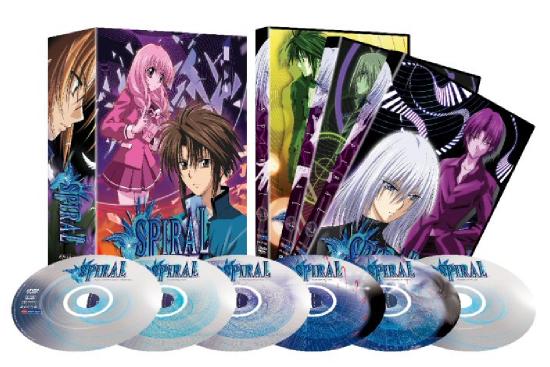
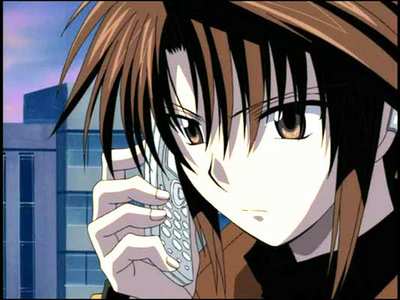
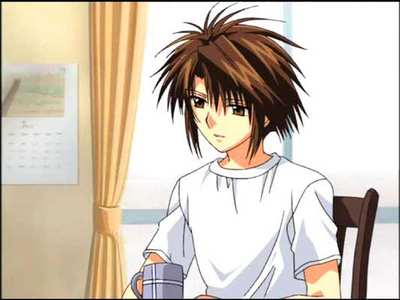
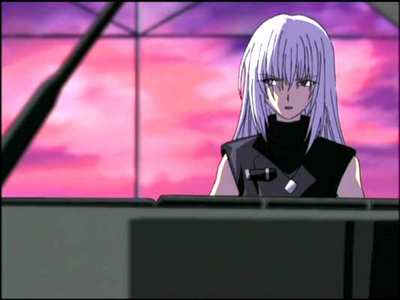
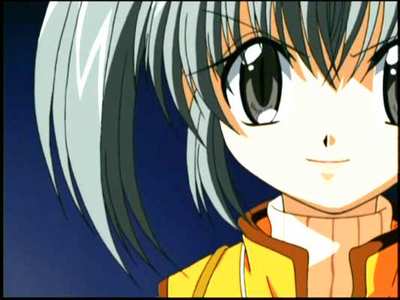
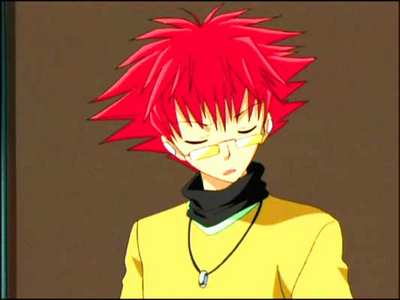
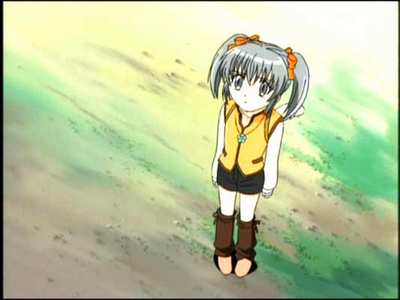
Your Opinions and Comments
Be the first to post a comment!